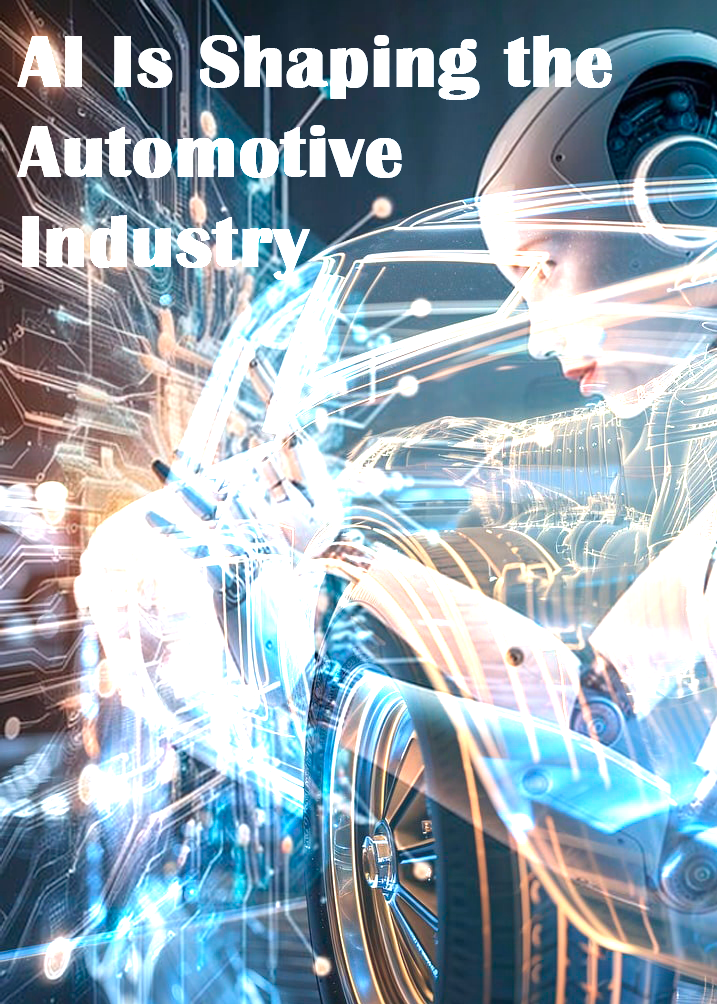How AI Is Shaping the Automotive Industry

The automotive industry is undergoing a seismic transformation, with artificial intelligence (AI) at the forefront of its evolution. From autonomous driving and predictive maintenance to enhancing the customer experience, AI has become a cornerstone of innovation in the automotive sector. This article explores how AI is reshaping the industry, the key applications, and what the future holds.
Table of Contents
The Role of AI in the Automotive Industry
AI is a game-changer in the automotive sector, empowering manufacturers, drivers, and even cities with smarter, safer, and more efficient solutions. AI systems can process vast amounts of data in real time, enabling innovations like driverless cars, smart manufacturing, and advanced safety features.
Applications of AI in the Automotive Industry
1. Autonomous Vehicles
AI is the brain behind self-driving cars, using advanced algorithms and sensors to perceive the environment, make decisions, and navigate roads without human intervention.
How It Works:
Autonomous vehicles rely on a combination of computer vision, machine learning, and real-time data analysis. Cameras, LiDAR, radar, and GPS feed data to the AI, which processes it to identify obstacles, traffic signs, and pedestrians.Notable Examples:
- Tesla’s Autopilot system combines AI with neural networks to enable semi-autonomous driving.
- Waymo, Google’s self-driving project, uses deep learning to predict and respond to real-world scenarios.
2. Predictive Maintenance
AI enables predictive maintenance by analyzing sensor data to detect potential issues before they escalate into costly repairs.
Benefits:
- Reduces downtime by addressing problems proactively.
- Lowers maintenance costs.
- Increases vehicle longevity.
Example Tools:
Platforms like Bosch Predictive Maintenance leverage AI to monitor engine health and recommend timely interventions.
3. Advanced Driver Assistance Systems (ADAS)
AI powers ADAS features, enhancing vehicle safety and reducing the likelihood of accidents.
Key Features:
- Lane-keeping assistance.
- Adaptive cruise control.
- Automatic emergency braking.
Impact:
AI-driven ADAS technologies are helping manufacturers move closer to achieving Vision Zero—an initiative aimed at eliminating road fatalities.
4. AI in Manufacturing
The integration of AI in automotive manufacturing has revolutionized production lines by improving efficiency, quality, and scalability.
Applications:
- Robotics: AI-powered robots handle repetitive tasks with precision.
- Quality Control: AI systems analyze images and sensor data to detect defects in real-time.
- Supply Chain Optimization: Predictive analytics ensure timely delivery of components.
Example:
BMW uses AI-driven robotics to optimize assembly line operations and reduce production errors.
5. Personalized In-Car Experience
AI enhances the driving experience by offering personalized features based on user preferences and behaviors.
- Examples:
- Virtual assistants like Amazon Alexa and Google Assistant integrated into vehicles.
- Infotainment systems that recommend music, routes, and settings based on user habits.
The Benefits of AI in the Automotive Industry
1. Enhanced Safety
AI-driven technologies like ADAS and autonomous systems significantly reduce the likelihood of human error, the leading cause of road accidents.
2. Cost Efficiency
Predictive maintenance and AI-optimized manufacturing processes reduce operational costs for manufacturers and maintenance expenses for drivers.
3. Sustainability
AI helps optimize fuel efficiency and supports the development of electric vehicles (EVs) by improving battery management systems.
4. Improved User Experience
Personalized features and intelligent navigation systems make driving more enjoyable and convenient.
5. Boosted Productivity
Autonomous vehicles free up time for passengers, enabling them to work, relax, or engage in other activities during commutes.
Challenges in Implementing AI in the Automotive Industry
While AI offers immense potential, it also presents several challenges:
1. High Costs
Developing and deploying AI systems require substantial investments in technology, infrastructure, and talent.
2. Data Privacy Concerns
AI systems collect and analyze vast amounts of user data, raising concerns about data security and privacy.
3. Regulatory Hurdles
Governments and regulatory bodies are still grappling with establishing clear guidelines for AI-powered vehicles and technologies.
4. Technical Limitations
AI models require extensive training on diverse datasets to function effectively, which can be time-consuming and resource-intensive.
Case Studies: AI Success Stories in the Automotive Industry
1. Tesla
Tesla’s AI-driven Autopilot and Full Self-Driving (FSD) systems have set benchmarks for autonomous technology. The company uses AI to improve battery performance, optimize manufacturing, and enhance vehicle software over-the-air.
2. Waymo
Waymo’s AI-powered autonomous vehicles have completed millions of miles of testing, demonstrating the viability of driverless cars for commercial use.
3. Ford
Ford uses AI in predictive analytics to streamline supply chain management and in production to ensure zero defects in assembly lines.
The Future of AI in the Automotive Industry
The role of AI in the automotive sector will continue to expand, driven by advancements in technology and evolving consumer needs.
Emerging Trends:
Electric and Autonomous Vehicles
AI will play a crucial role in the mass adoption of EVs and fully autonomous vehicles.Smart Cities and Connected Cars
AI-powered vehicles will integrate seamlessly into smart city ecosystems, communicating with traffic lights, other vehicles, and infrastructure to reduce congestion and emissions.Enhanced Cybersecurity
As vehicles become more connected, AI will bolster cybersecurity measures to protect against threats.AI-Powered Design and Innovation
AI will aid in the design of lighter, more aerodynamic vehicles, improving efficiency and performance.
Conclusion
AI is reshaping the automotive industry, driving innovation across manufacturing, safety, and user experience. From enabling autonomous vehicles to optimizing production processes, AI’s impact is profound and transformative. While challenges remain, the benefits far outweigh the obstacles, promising a smarter, safer, and more efficient future for the automotive sector.
As technology evolves, the integration of AI into every facet of the automotive industry will continue to accelerate, redefining the way we design, manufacture, and experience vehicles. For businesses and consumers alike, the road ahead is undeniably powered by AI.
keep reading:
